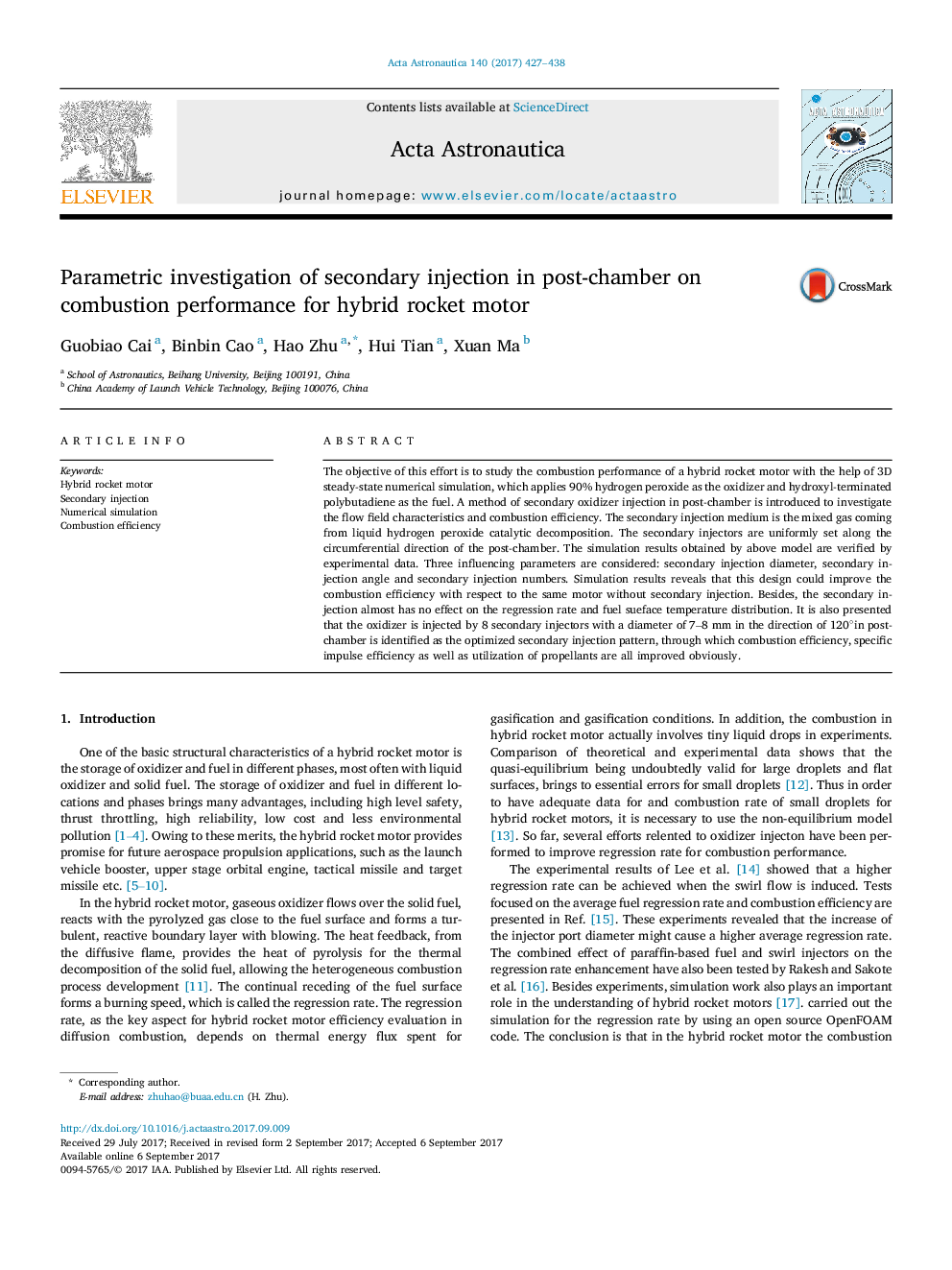| Article ID | Journal | Published Year | Pages | File Type |
|---|---|---|---|---|
| 5472132 | Acta Astronautica | 2017 | 12 Pages |
Abstract
The objective of this effort is to study the combustion performance of a hybrid rocket motor with the help of 3D steady-state numerical simulation, which applies 90% hydrogen peroxide as the oxidizer and hydroxyl-terminated polybutadiene as the fuel. A method of secondary oxidizer injection in post-chamber is introduced to investigate the flow field characteristics and combustion efficiency. The secondary injection medium is the mixed gas coming from liquid hydrogen peroxide catalytic decomposition. The secondary injectors are uniformly set along the circumferential direction of the post-chamber. The simulation results obtained by above model are verified by experimental data. Three influencing parameters are considered: secondary injection diameter, secondary injection angle and secondary injection numbers. Simulation results reveals that this design could improve the combustion efficiency with respect to the same motor without secondary injection. Besides, the secondary injection almost has no effect on the regression rate and fuel sueface temperature distribution. It is also presented that the oxidizer is injected by 8 secondary injectors with a diameter of 7-8 mm in the direction of 120°in post-chamber is identified as the optimized secondary injection pattern, through which combustion efficiency, specific impulse efficiency as well as utilization of propellants are all improved obviously.
Related Topics
Physical Sciences and Engineering
Engineering
Aerospace Engineering
Authors
Guobiao Cai, Binbin Cao, Hao Zhu, Hui Tian, Xuan Ma,
